Pride of one family of Danghadi Goun.
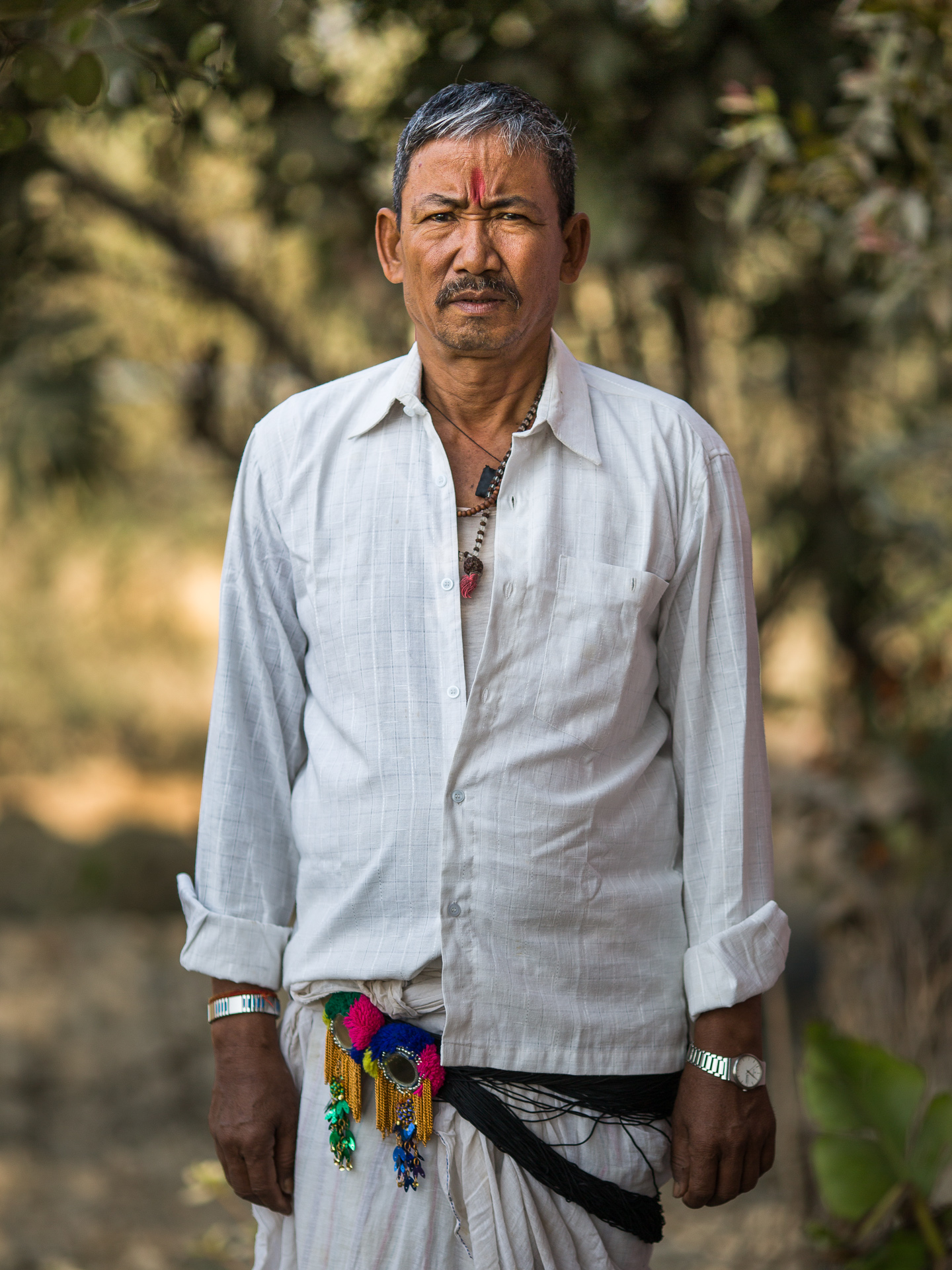
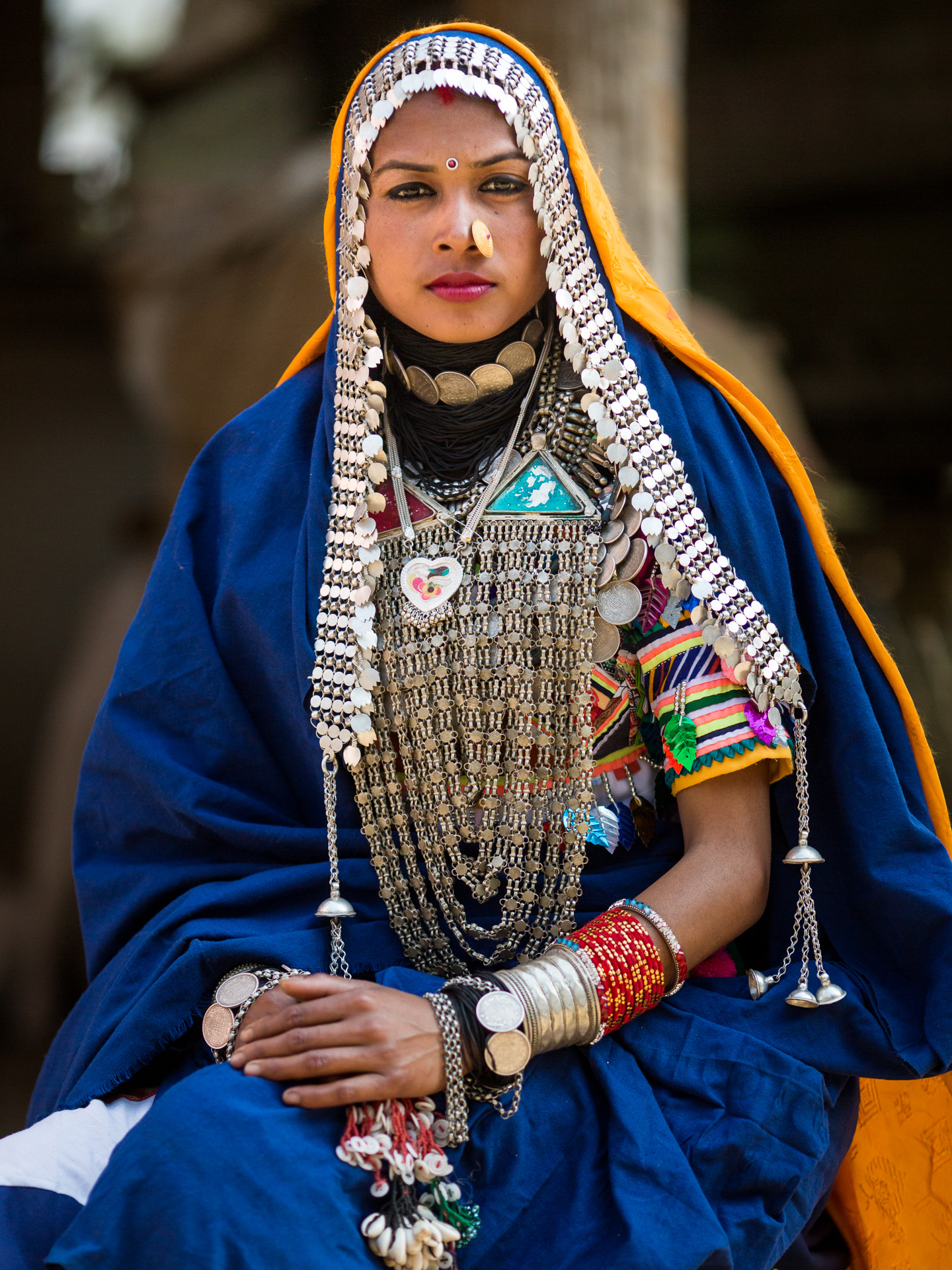
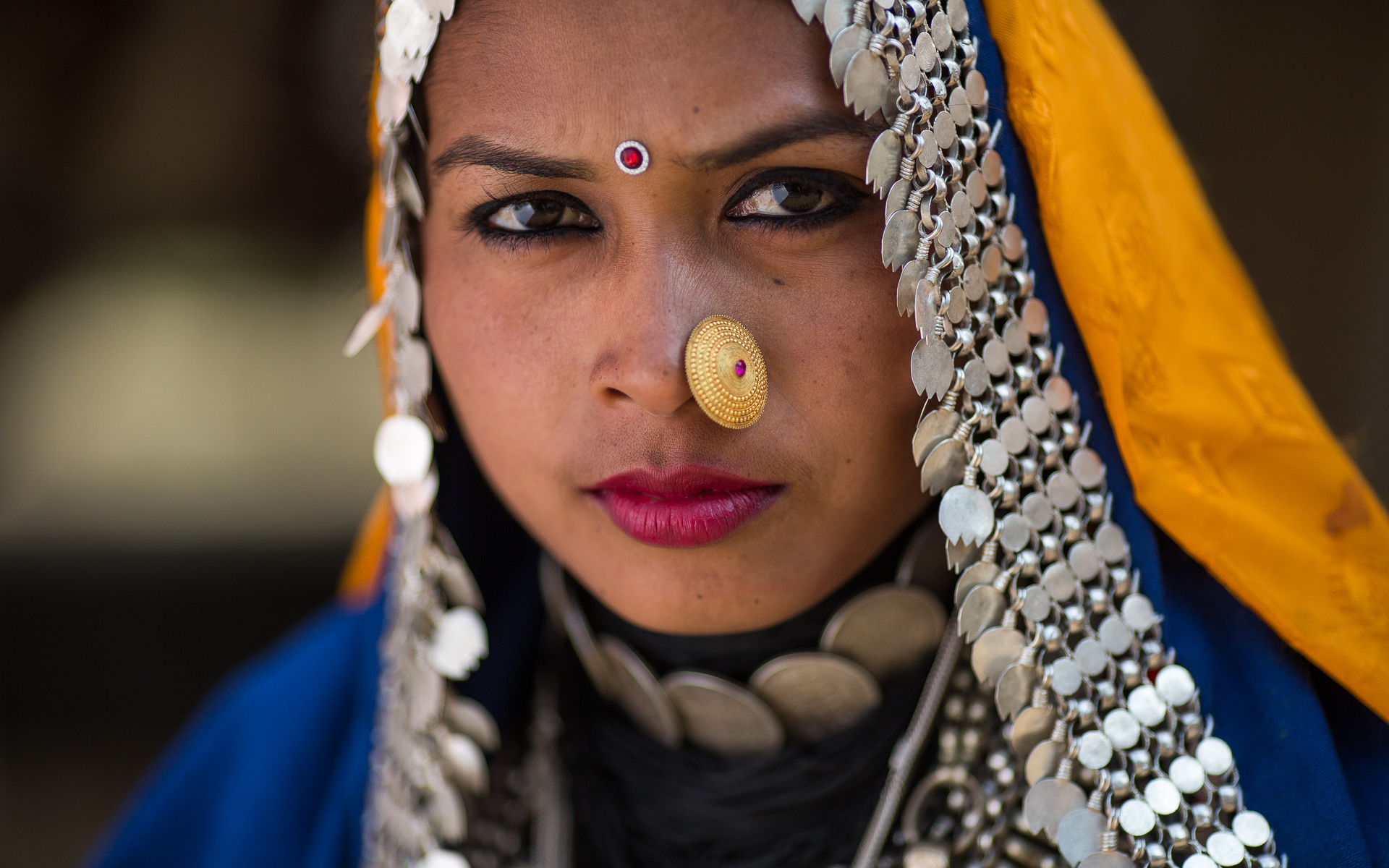
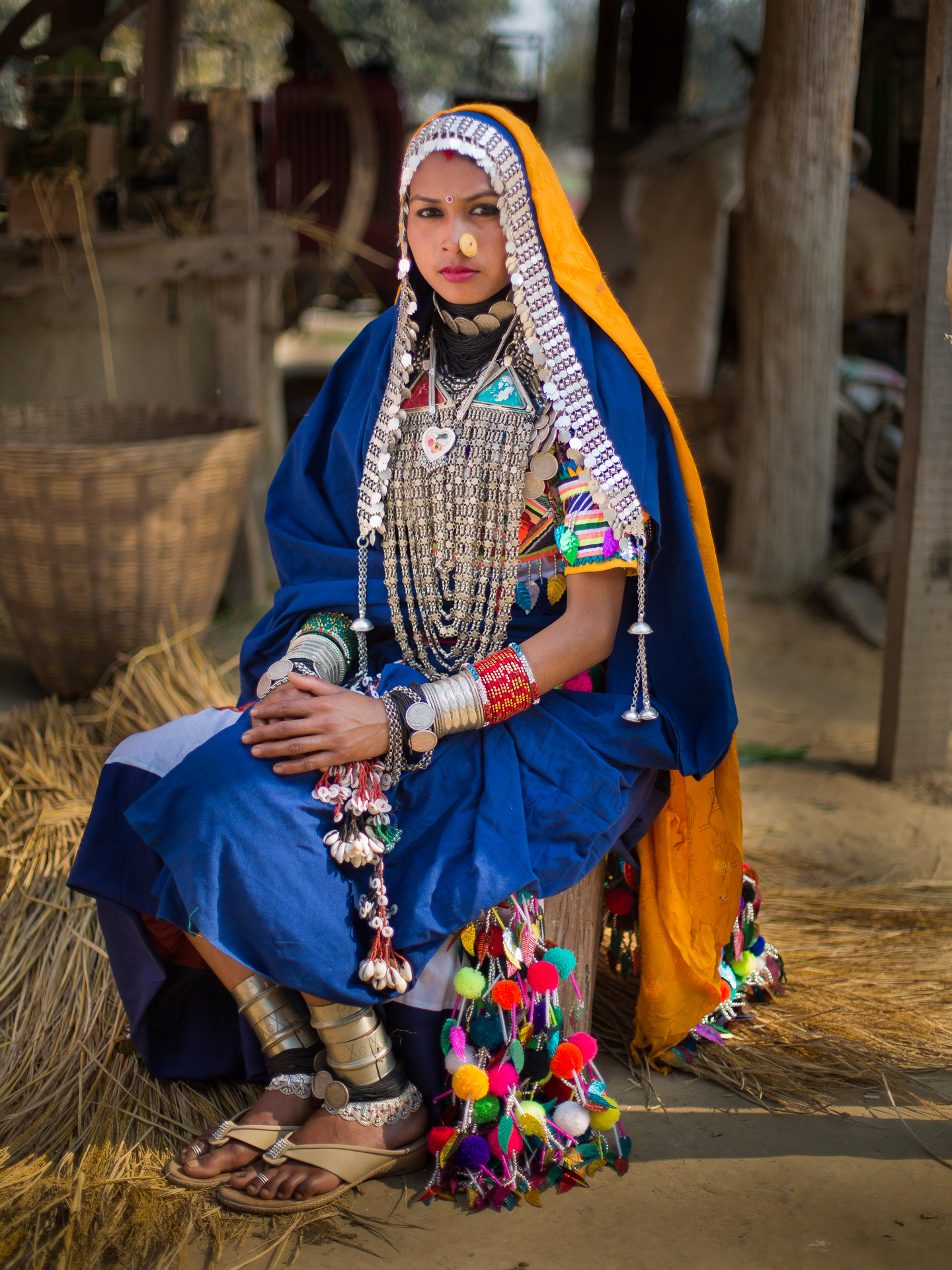

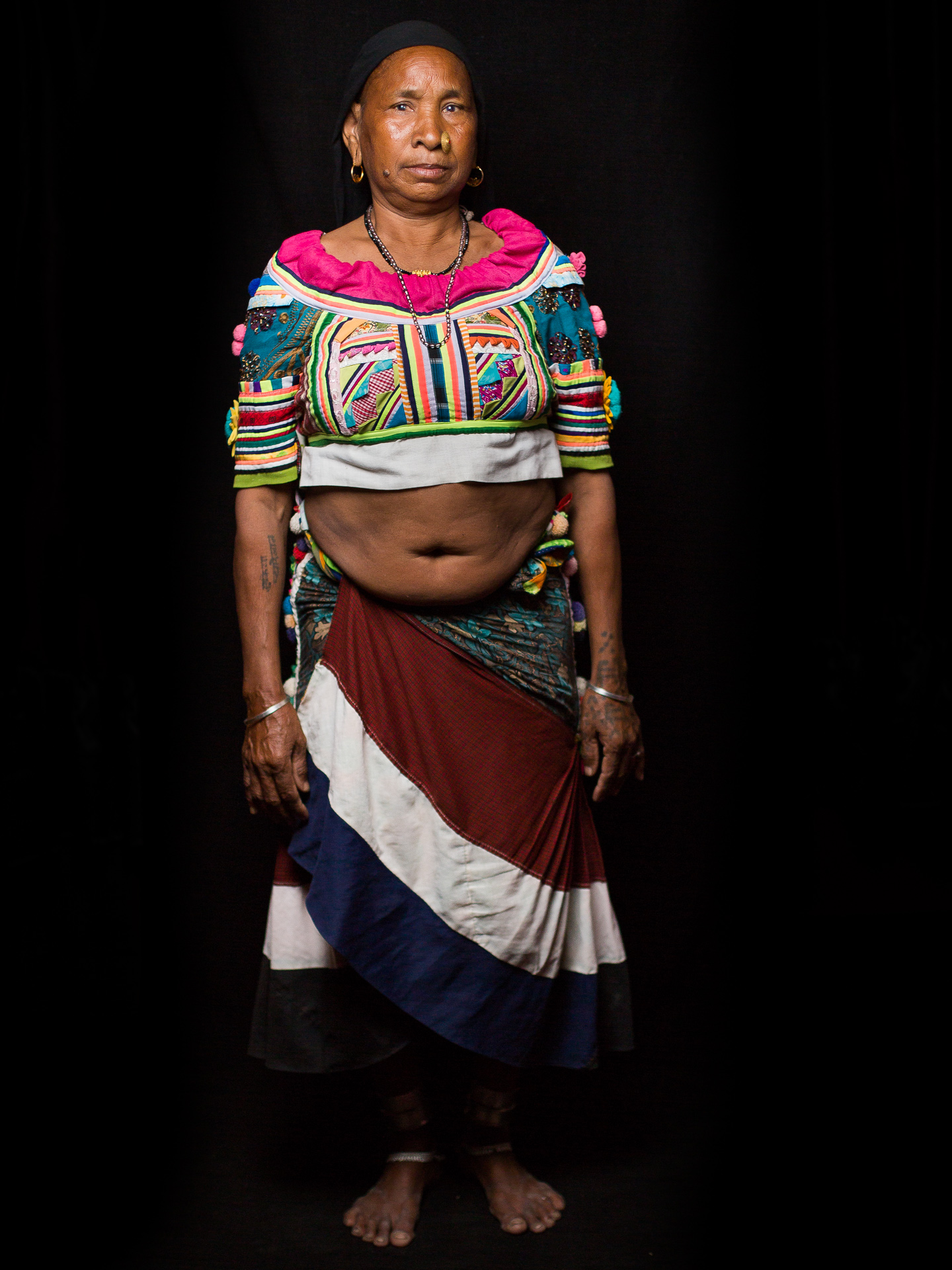


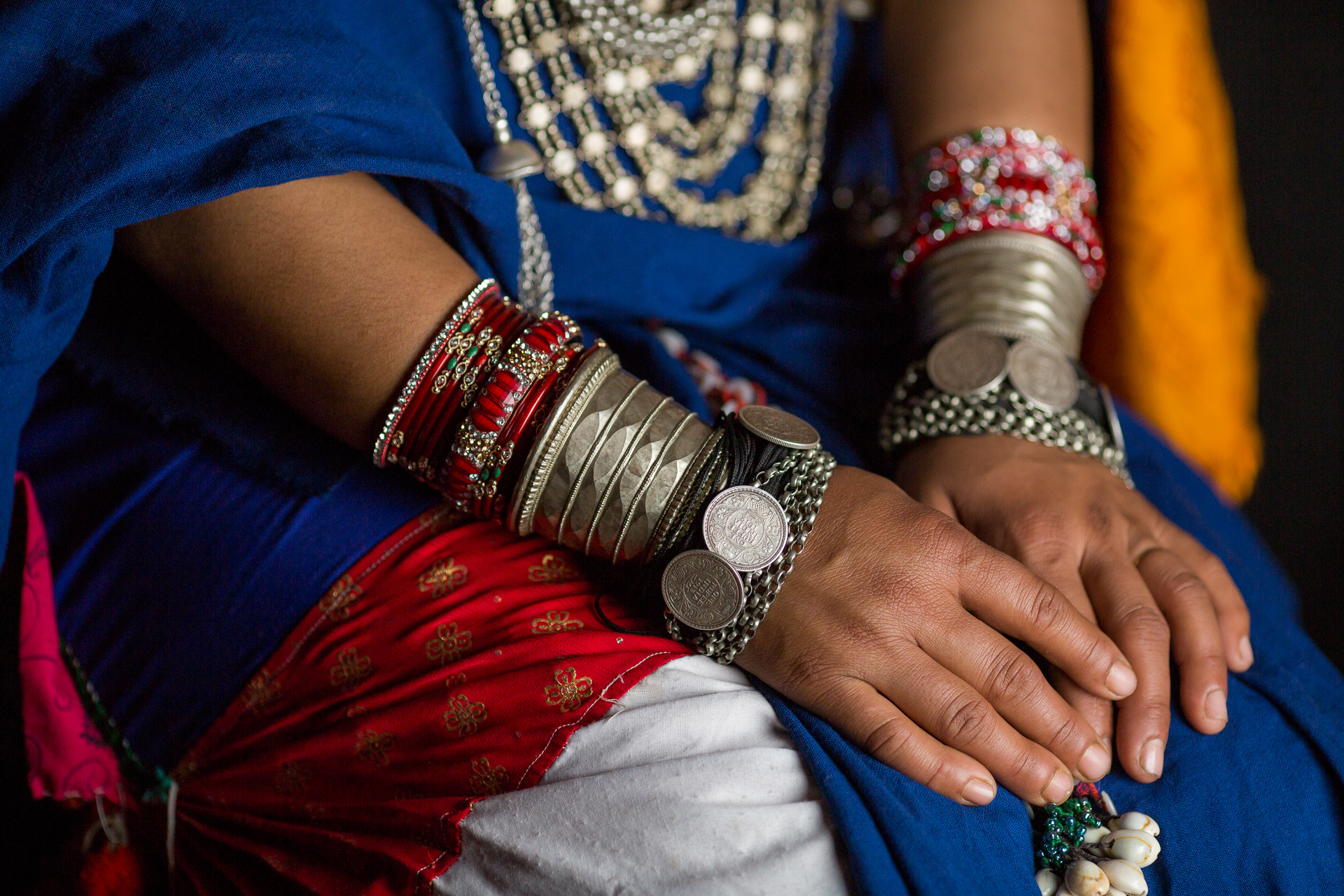
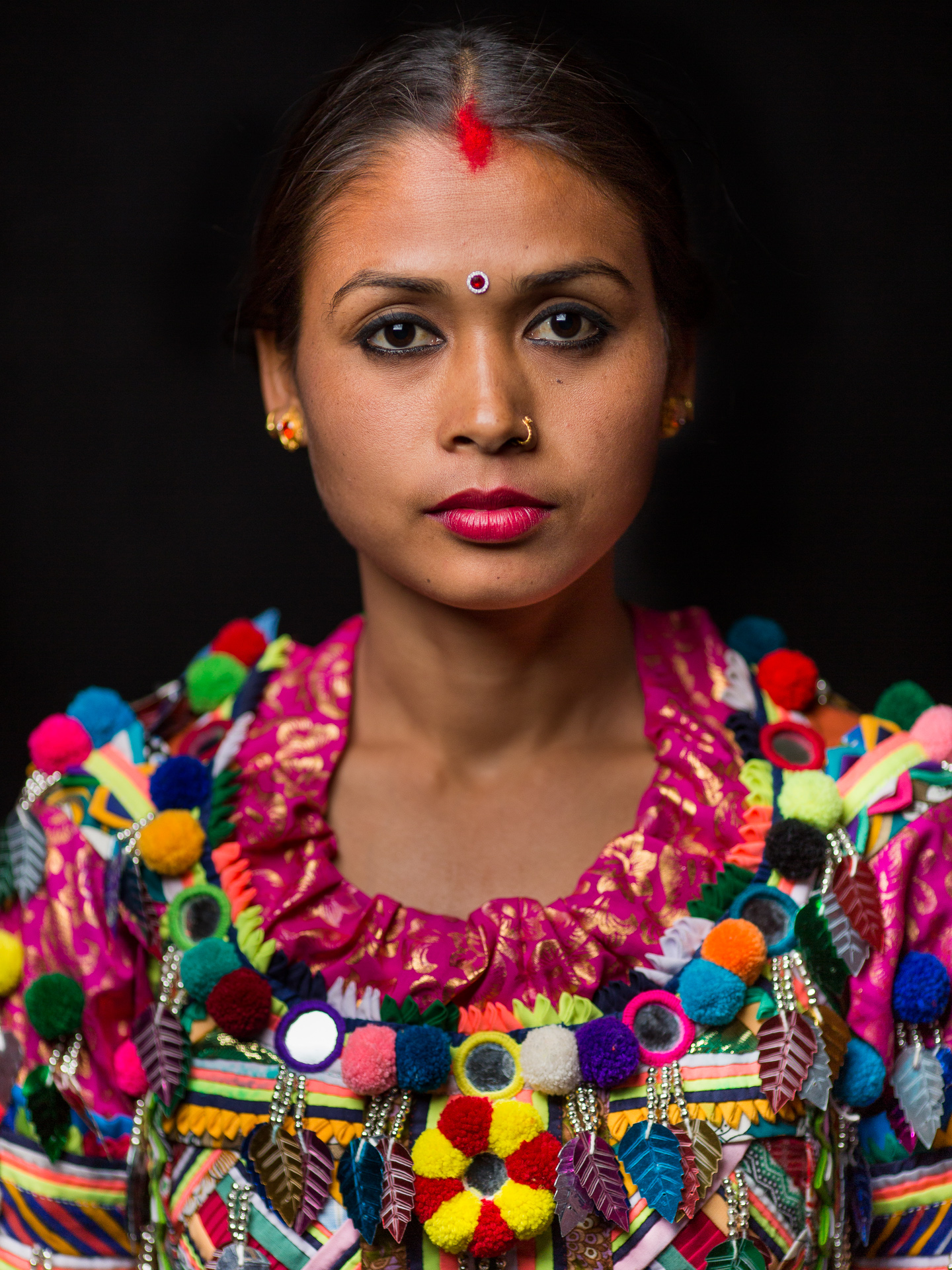
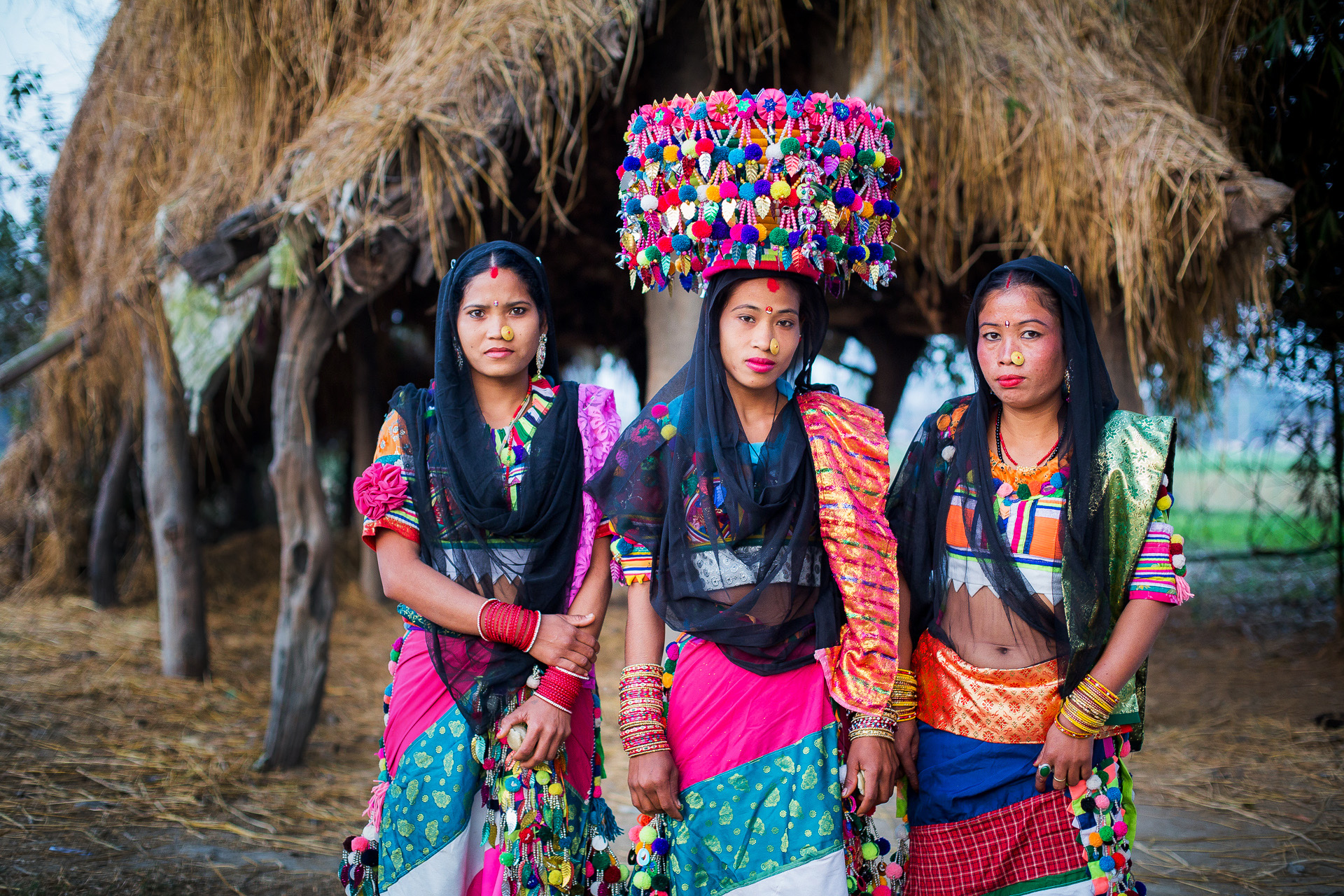
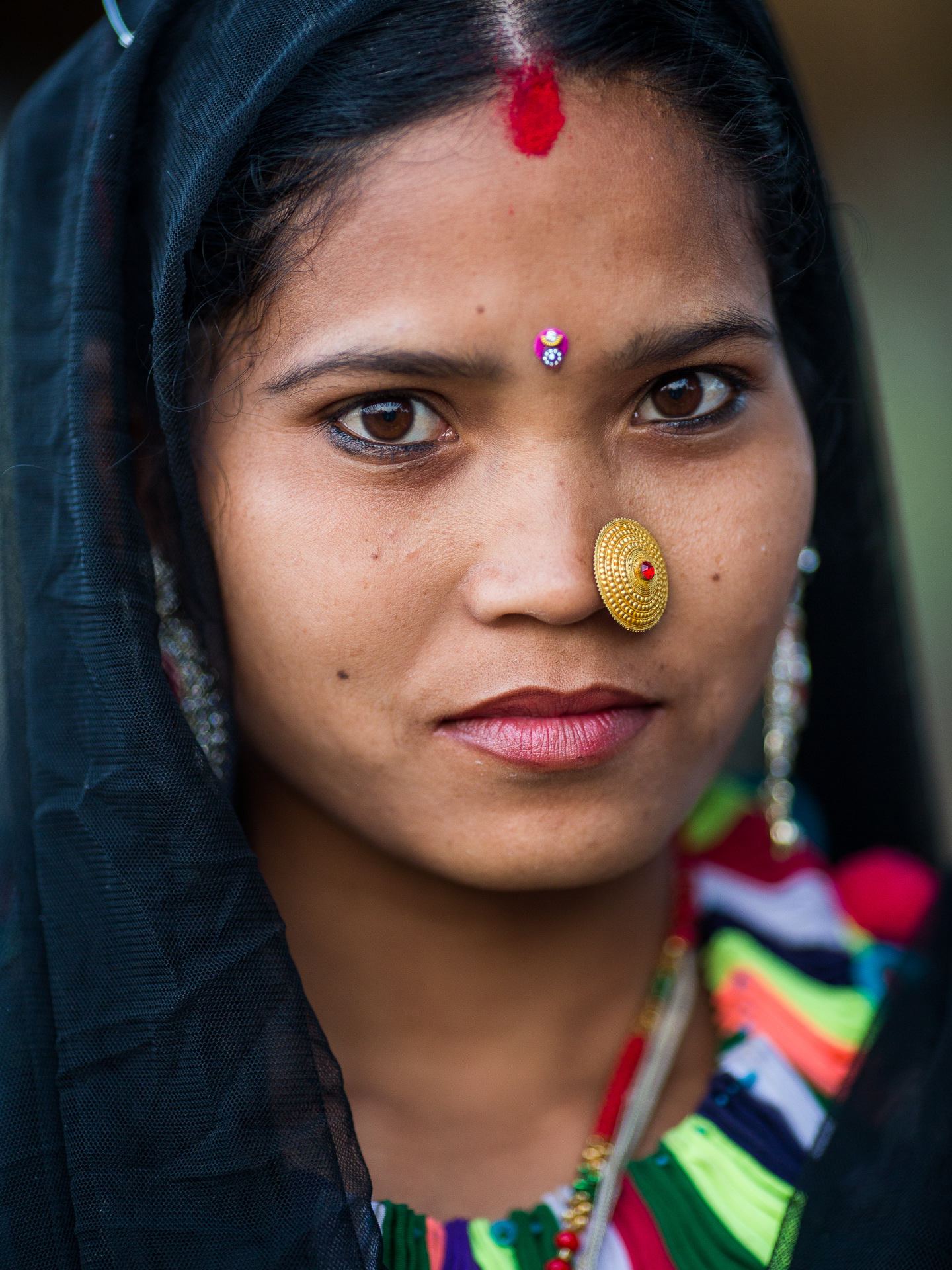
Pride of one family of Danghadi Goun.
This was a wedding that took place in the Nepali Darchula. The bride came from the village of Sitaura and her Husband came from Indian Dharchula, just across the border. We where invited to take a few portraits at their wedding.
Lady who is caretaker of the Hindu Krishna Tempel in Danghadi goun, Far-West Nepal.
INTERVIEW WITH YOUNG DANGURA THARU GIRLS IN CHAUDHARI REGION
“We are known for our strong community”
During our visit in Chaudhari region in the far west of Nepal, we interviewed three young Dangura Tharu girls. Manisa, Nisha and Kushuma told us about their cultural background and believes. The heritage of Dangura Tharu people lies in inner Terai, in Dang Deukhuri district. This is why they are called Dangura Tharu. Even though their main community still lives in this area, these days Dangura Tharu are also to be found in other regions in the Central and (Far) West of Nepal.
“When it comes to our cultural heritage you should know about our most important celebration: New year, Maghi*. This festival is also known in other Tharu communities, but it is very important to us that we celebrate according to our own costumes. During Maghi we will start our day with a thorough wash, for this will cleanse us from any deceases we might have. And we always celebrate our new year with a relaxed body and mind. This means we aren’t working and the first three days of our new year will be only about singing, dancing and eating our traditional foods made from rice flour. As we believe that when we start our new year with nice and cheerful activities, there lies a nice and cheerful year ahead of us. Just like we do in any other important occasion, the celebration starts in the house of our Badghar**. From there we dance and sing from door to door for the following three days.”
“You should also know that we are known for our strong community. I will give you an example: whenever something big happens, like a marriage or even a death, our entire community will gather to see how we can help out. This means every family will be there to contribute to some of the necessary tasks. Together we decide who is responsible for inviting the guests and who will cook our festive meals. Others will be divided the tasks of doing the dishes or taking care of decoration. If a family fails to support in such an important occasion they will be charged a 200 rupees*** fine.”
“Not only do we share and take care of the necessary tasks together when it comes festivities, we also share and exchange the children of our families. While in the early days marriages were arranged whenever a child was still in it’s mothers womb, these days things work a little differently. Mostly our marriages are still arranged, but some children are asked for their opinion in the matter. Though whenever our brother marries a girl from a certain family, we are obliged to marry a brother of our brothers wife. After our wedding we will move into the family house of our husbands and the wife of our brother moves into ours.”
* Maghi is celebrated in the first day of the month of Magh, which is mid January in the Gregorian calendar.
** Badghar is the elected village chief and responsible for all decision making in case of any type of problem. He is chosen for his nice, good and social character and not aloud to drink or to do anything else that can bring damage to the community.
*** 200 rupees is about 1,65 euro.
Previous text:
We talked with Manisa, Nisha and Kushum Chaudhary about their Dangura Tharu culture and community. They live in Danghadi goun (village). As the local people explained Dangura Tharu people are originaly from migrated from the Dang district in Nepal. Because of this they are called Dangura Tharu. Their main community is still in Dang but ones they spread out over other area's in Central and (Far) West-Nepal. They live in the Tarai and inner Tarai, the part of Nepal that consists of planes, forests and mainly farming fields.
Kamaiya are also from this same community. Before 2007 they were used as slaves for rich people, mostly higher casts. Still the Kamaiya people where uneducated so live from labour work that consisted of the most physical and they didn't got any salary as they where slaves. At this time they mostly live still in separate villages that are called 'Siver', the land that is given by the government after they recently got liberated as slaves.
The three girls are studying in class 9 at the Shree Danghadi Higher Secondary School. During our interview they described that Magi is their most important festival. They visit the houses from from their villages from door to door and sings and dance for three days. They are proud to be from the Tharu community and feel happy to show their cultural dressing for our portraits.
At January 10, 2016 // 2072 1st of Margh a Kumba Mela took place at Danghadi Godouri Temple. A Kumba Mela is Hinduistic festival where tenthousands of people gather for purifying themselves in a river with holy water. Also they worship their gods and get a blessing from one of the many present baba's and sadu's (hindu priest). Kumba Mela used to take place only in India so this is the first time in Nepal. During our visit we met serveral baba's and sadu's. One of them told us the story about this festival. He explained that this Godouri Khumba Mela is not an official Khumba Mela because it is not organised by the baba's and sadu's but by the local autorities and by entrepenaurs. We had the honor to take portraits of a few of the baba's and sadu's.
Dangura Tharu lady in Far-West Nepal
In January 2016 for the first time I had the honor to take portraits of the Rana Tharu Tribe in Far-West Nepal.
Photoshoot in Kathmandu, Nepal with Punam Gurung. [ July 2015 ]





Afgelopen zaterdag hield bierbrouwer Ramses Snoeij van Ramsesbier een opendag waarop zijn 2 nieuwe lentebieren werden gepresenteerd: "Gouden Adelaar" en "Bloedzuiger".
DE GOUDEN ADELAAR
Single hop, Simcoe
Deze Amerikaanse hop geeft het bier een aardse toets met citrus tonen
en passie vrucht. Een deel van de hop is tijdens het bottelen
toegevoegd waardoor het bier extra fris en fleurig is.
Mexican Lager
Mais en agave siroop zorgen voor een bijzondere balans. De frisse
citrus en dennen tonen van de hop en het lage alcohol percentage maken
dit een ideaal zomerbier.
Con Corazón
Met het kopen van dit bier levert u een bijdrage aan de realisatie van
Hotel con Corazón Mexico. Een hotel dat 100% van haar winst investeert
in lokale onderwijsprojecten. www.hotelconcorazon.com/oaxaca
3,8 %
Ook zijn recentelijk nieuwe bieren "Zonder Baard" "Koele Kikker" en "Naar de Haaien" stonden op de tap om te proeven.
Meer informatie en vooral waar je zijn bieren kunt proeven vind je op: www.ramsesbier.nl







Short description in English: At this Open Brewery Day brewer Ramses presented his two new Spring beers: "Golden Eagle" and "Leech". Also his recently introduced beer "Without Beard" was available to taste. More about Ramsesbier can fe found here.
During the night I was woken by my bed moving. I was still sleepy and wasn't sure what was happening. The shaking movement was followed by a lot of screaming and crying. It took me a few minutes to realize what was happening. An earthquake was striking and it was a strong one because when I tried to out of bed I had difficulty getting up. The room was dark, very dark and I couldn't find my light or telephone. I had forgotten forgot where I put them before I went to bed not thinking that in Nepal these earthquakes can happen suddenly, including at night. I was in a strange hotel room. Where was the light switch? I searched in the dark while the movements continued with people screaming and crying louder and louder. I heard some people screaming to me: " go outside, this is earthquake, please go fast ".
I thought about the situation. I was in a concrete building with multiple floors. Would this be strong enough...or perhaps not. I had seen lots of these concrete buildings destroyed by the earlier 6.7 and 6.4 earthquake. Would this one be so strong that the building could collapse? I went to the doorway and wanted to run out but the door was locked from inside. Damn where was this lock,in the top or bottom? I found it and wanted to run outside but I realized something was missing from my feet and grabbed my flip flops. Then I decided quickly to grab my computer, telephone and wallet. I walked to the stairs and went down. I realized that the shaking had stopped. Would it be over now? Or would it return again and perhaps even stronger? Should I quickly take more of my positions like my camera, which I call "my baby" to many people? But what if I went back and the earthquake came back even stronger. I had again a long way to go to get outside of this building. I decided to keep moving to the outside of the building. On my way there were more people moving out. From some faces you could read that they were terrified, especially the women. Most of the men were asking me if I realized that this was an earthquake, making jokes to me and laughing. Probably they were as afraid as the women and children but they were too macho to show this to others.
When I got outside there were about 200 people who had come out all of all the houses and little apartments. Most of them were talking about what happened. Most wanted to go back to sleep but others said that it was not safe to return to the building. After 30 minutes the situation calmed down and people started going back inside. They told me to go sleep again but my mind was quite confused and I could still feel a lot of adrenaline in my body. Lying back in bed I was thinking that if there was a next time I should find a safe place more quickly. Still there was a lot of sound around me in the building and the street. I rehearsed what to do if they earthquake came back. Slowly the sound faded and this also calmed me down and I fell asleep again, luckily not to wake up from another earthquake.

Herbert en Ivy hielden hun Surinaams-Nederlandse bruiloft op de boerderij van Herberts ouders - Foto: Pim Horvers
door Jenny Velthuys 8 jul 2015
Ivy is impulsief, temperamentvol, zelfstandig en zorgzaam. Herbert is wat planmatiger.
Een vriend van Herbert nodigde hem vijftien jaar geleden eens uit voor een personeelsfeest van de Haagse Hogeschool. Daar was Ivy ook. Herbert vond Ivy meteen heel spontaan. En ze had mooie ogen. Dus toen hij haar de volgende keer zag, op het verjaardagsfeestje van diezelfde vriend, volgde de eerste kus.

Ivy groeide op in Suriname, waar haar vader een transportbedrijf had en haar moeder verpleegkundige was. Herbert groeide op in Almkerk. Zijn moeder was assistente van een kaakchirurg, zijn vader is salesmanager bij Supertape Packaging. Ze lijken niet erg op elkaar. Ivy is impulsief, temperamentvol, zelfstandig en zorgzaam. Herbert is wat planmatiger. Samen hebben ze twee kinderen.
Grappig detail: toen ze na een relatie van vijf jaar gingen samenwonen, ontmoetten het broertje van Herbert en het zusje van Ivy elkaar. Die zijn inmiddels ook met elkaar getrouwd.
Herbert vroeg Ivy ten huwelijk toen ze voor haar werk als hr-manager Europe bij Hitachi Transport System, een logistieke dienstverlener, in Tokio was. Herbert, voor zijn baan als commercieel directeur bij Supertape ook veel in het buitenland, reisde haar achterna. Hun Surinaams-Nederlandse bruiloft op 13 juni was in de monumentale boerderij van Herberts ouders.
Elsevier nummer 28, 11 juli 2015

From today our Foundation website and Facebook page is officially launched. This week we received the bank account number for the foundation so we could finally start.
You can support us in different ways. Please read the Project pages to see more details.
On behalf of the people of Nepal: Thank you for your support!
Donations can be send to:
Your donation allows us to support the people of Nepal.
You can choose which projects to support and donate to.
Bank account : NL20 INGB 0006 9530 08
Stichting Micro-Care Nepal
www.microcarenepal.org
See more about the foundation on our website here:
www.microcarenepal.org
Finally got to talk with my friends and family in Nepal and luckily they are safe.
My closest family lives in a little bamboo cottage whats a quit safe place. Last night more then 30 people slept at their little house and even in their chicken run. Tonight more then 40 will arrive.
My close friend was at school, run outside as the hole building collapsed. The few computers they had were destroyed. Just seen photos of people walking with tears in their eyes while seeing the old historical buildings being completely destroyed.
All shops are closed. There is no electricity what means in most cases there is also no water..
I heard that the greenhouse we recently build as most of my fb followers probably have seen, is almost completely destroyed by the house that is next to it. It collapsed and fell on top of it so the bamboo, plastics and the plants are destroyed.
I was just one the phone with friends in Kathmandu and they told me there was another earthquake around force 6.0 one hours ago. While being on the line my friend told me there was a new earthquake coming at this time and after that the connection was gone. So now again waiting to hear if they are safe and what was the result of another after shake....
Because photos speak even more:
http://www.telegraph.co.uk/news/worldnews/asia/nepal/11562833/Massive-earthquake-hits-Kathmandu-Valley-in-Nepal-in-pictures.html?frame=3281320